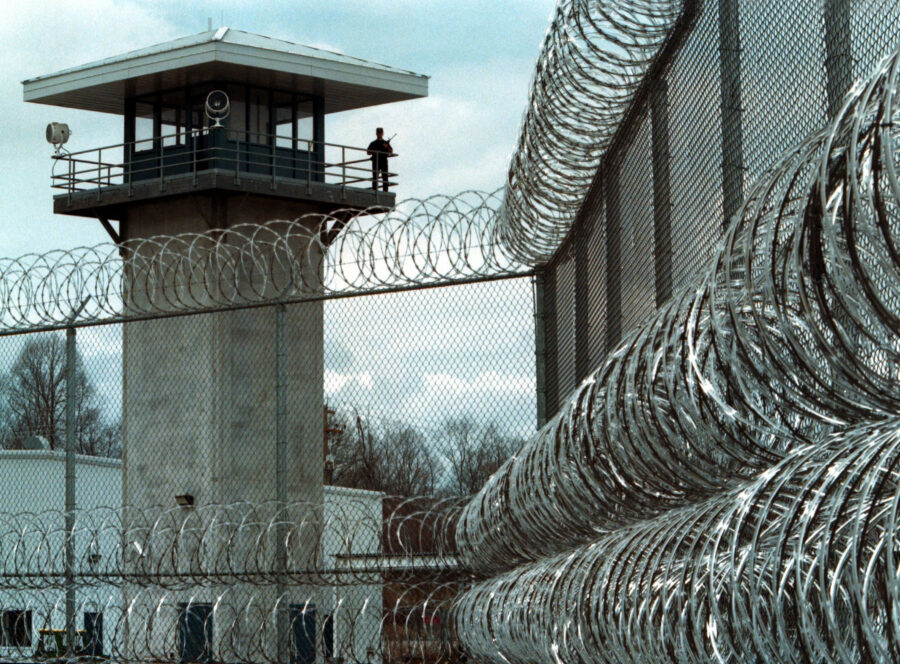Americans are not typically aware of how their federal and state prison systems work. What we think we know, we learned from watching television. When I took my first walk through at FCI (Federal Correctional Institution) El Reno Oklahoma as a new employee, I was surprised at how non-Hollywood real prison life is. Frankly, all I knew about prison life was what I saw on television or at the movies. Not even close.
As I got closer to retiring from the Federal Bureau of Prisons (FBOP), it began to dawn on me that the security practices we used in the prison system were being implemented outside those walls. “Free worlders” is prison slang for the non-incarcerated who reside in the “free world.” In this article I am going to compare a number of practices used in federal prisons to those being used today in the “free world.”
You might find that our country may be one giant correctional institution.
1. Cameras & Movement Tracking
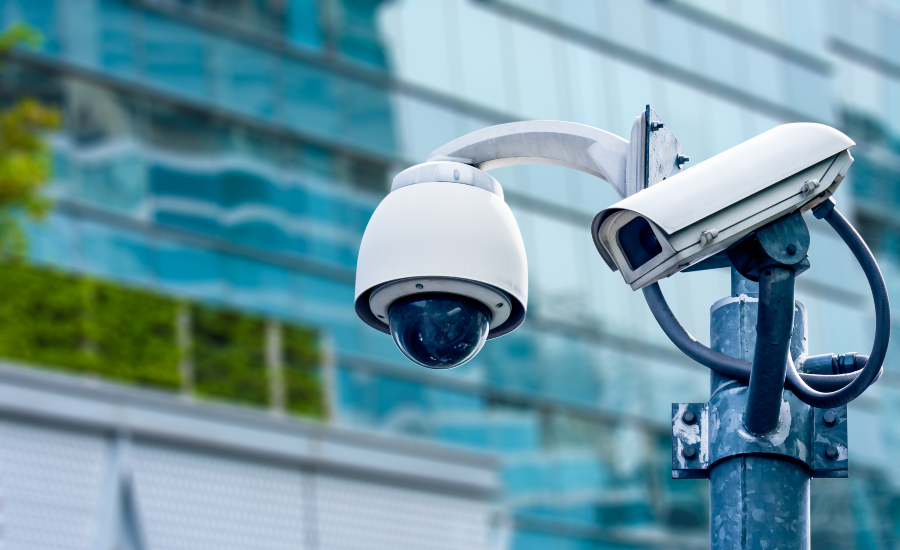
- Source: securitymagazine.com
In federal prisons, cameras are everywhere. The reason, of course, is to help maintain security and keep track of prisoners. Inmates know that if they break any rules or policies, they can be readily identified if the event occurred in view of a camera. The cameras remind the inmates that they do not have any freedom or privacy, and that they live under total control.
Unfortunately, the “free world” is now subject to the widespread use of video surveillance and movement tracking. This goes beyond cameras, which have become virtually ubiquitous now. The federal government has been handing out grants to create sophisticated surveillance grids in cities across the country.
These surveillance grids frequently include license plate readers — some with the ability to log 1,200 license plates per hour, logging timestamps and location data — giving the government a way to track people and analyze their movement patterns. Some cities post license plate readers to log every single vehicle that enters or leaves its boundaries. Many cities have turned their police cars into roving data collectors by outfitting them with mobile license plate scanners.
A man from California discovered that he had been photographed 112 times over the course of a couple years — from just one police cruiser mounted with a license plate scanner! The local databases of movement data are integrated with the federal government through its fusion centers located all over the country.
The government also has the ability to use facial-recognition software in conjunction with its surveillance grid to instantly identify individuals by comparing their photograph to biometric databases created using BMV photographs. Facial recognition cameras can be set up to accurately identify a person against a database of millions of images in less than one second. The government can then potentially log their locations and using the data for any purpose it wants.
As the usage of these technologies grows, the “authorities” will practically know where you are at any time. The British have the greatest level of electronic surveillance in the world. Their movements are said to be recorded 3,000 times a week. The United States is not that far behind. In some ways, with the numerous NSA spying programs, the USA leads the world in destroying personal privacy. Today’s youngest generation will grow up never knowing what privacy is.
2. Drug Testing
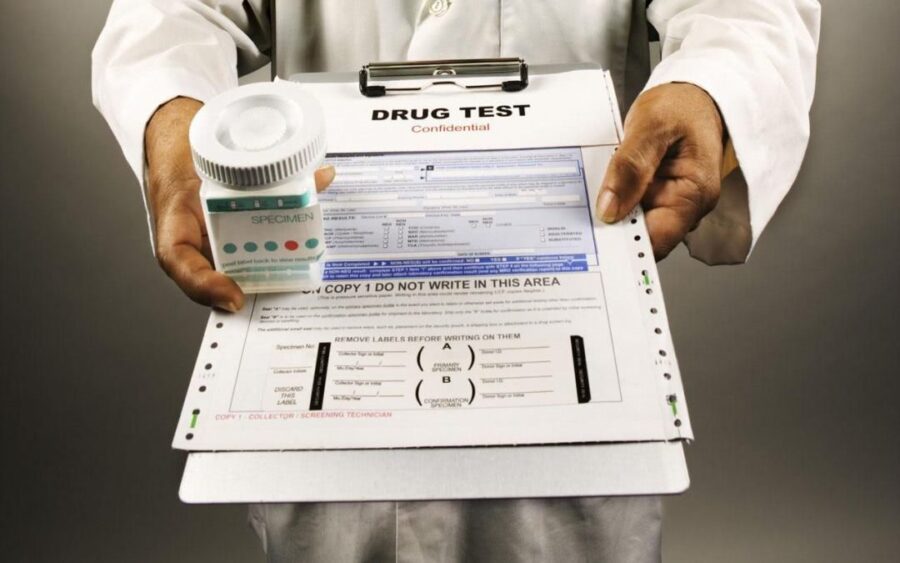
- Source: victig.com
The federal prison inmate drug abuse monitoring program has been going on for decades since the capability was invented. At any time, a prisoner can be tested for intoxicants using urine, sweat, saliva, and hair samples taken by force. After years of perfecting the process on inmates, it was introduced to the American public.
On September 15, 1986, President Ronald Reagan signed Executive Order 12564, establishing the goal of a Drug-Free Federal Workplace. Additionally, in 2010, the Substance Abuse and Mental Health Services Administration (SAMHSA) finalized a new rule that allows federal agencies to use sweat, saliva and hair in federal drug testing programs that only tested urine.
Since then, many private businesses and corporations had to begin testing their employees in order to keep or obtain federal contracts. Under federal guidelines for employee testing, if a person takes medicine that was not prescribed to him, he has committed a federal drug abuse offense and may be fired. Children in public schools are also subjected to involuntary random drug testing.
The inmates were the guinea pigs for a program now being regularly employed on Americans. This process conditions Americans to be accustomed to regularly submitting bodily fluid samples to the government, lessening their resistance to data collection and intrusion in other areas.
3. Metal Detection & Weapon Confiscation
In prison, detection and confiscation of weapons is a necessity. Prisoners cannot be allowed the freedom to possess objects that could potentially be used to cause harm to others. The security of the facility relies on the prisoners remaining disarmed.
With that said, not even prisons can be guaranteed to be weapon free. Inmates are clever, and can fashion any piece of metal into a makeshift weapon. They are also prolific smugglers. To mitigate this risk, prisoners and visitors are put through metal detector checkpoints to keep them disarmed. Any metallic contraband is confiscated.
Treating prisoners this way is one thing. In a prison setting, security trumps liberty. The liberties of the inmates have been curtailed through due process on an individual basis. But these prison tactics have crept out into the “free world.” Now, virtually all government buildings use metal detectors to screen incoming visitors and even their own personnel.
This establishes a climate of fear of weapons and a false sense of security among those within such “weapon free zones.” If a prison can’t proclaim to be weapon free, how can any place outside of prison make such arrogant and naive claims?
4. Crowd Control
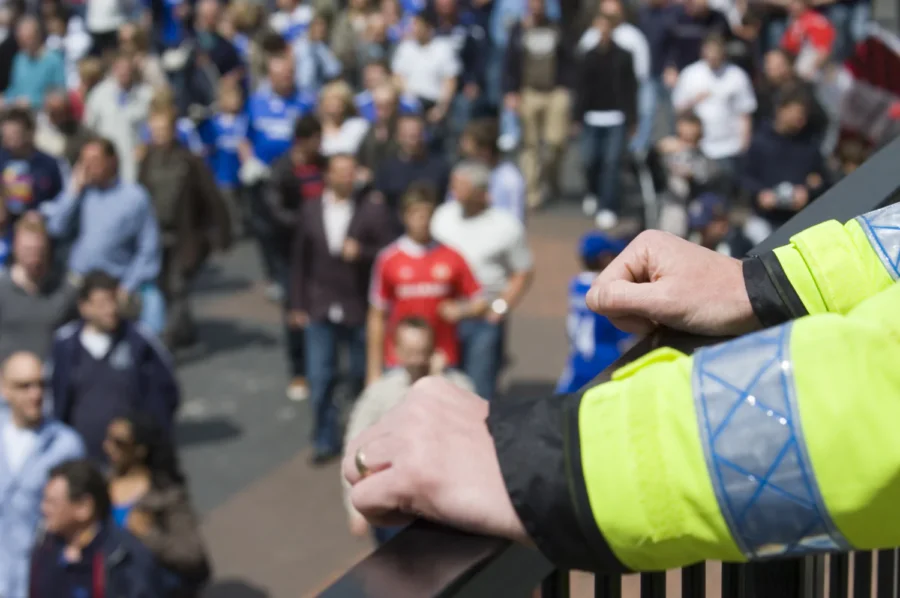
- Source: streetsolutionsuk.co.uk
Helmets, face shields, batons, knee guards, tear gas, wedge formations, line formations, half steps, full steps, pinning tactics — all of these phrases are associated with prison crowd control. As I look at today’s police and how they attempt crowd control it reminds me of my days in federal prison as the Hostage Negotiation Team (HNT) leader. The HNT worked closely with the Special Operations and Response Team (SORT) on both monthly local training and annual training at Fort Gruber in Muskogee Oklahoma. SORT membership is selective and highly practiced.
The teams must be familiar with hand signals and verbal commands, as well as certain maneuvers that are often referred to as “stomp and drag.” These tactics are designed to help quell disturbances — the FBOP word for “riot” — by forcing inmates in the direction that SORT wants them to move. This training takes place monthly for SORT members and annually for the rest of the FBOP staff.
The next time you see police engaged in crowd control on television you are watching what was perfected by prisons official through years of practice and real life action. I participated in five disturbances. After observing law enforcement agencies dress up in intimidating riot suits and mimic the behavior of SORT, it is clear that police are using prison tactics to intimidate and control civilian protesters.
5. Checkpoints & Random Pat Searches
In federal prison, all inmates are subject to an immediate pat search by any staff member, anywhere, at any time. If the inmate refuses, he or she is “arrested,” which entails being cuffed and escorted to administrative segregation — otherwise known as the jail within the jail. The pat search is used to detect contraband. All inmates returning from industrial work programs in medium and low security institutions are pat searched and metal detected before being allowed to return to their dorm.
Additionally, inmates in medium and low security institutions are pat searched when they leave food service or the “chow hall.” In high and maximum security institutions, inmates are pat searched every time they move. Movement in these institutions is highly controlled.
Compare this to police roadblocks and checkpoints used to perform warrantless searches for contraband. When a person is stopped by city, county, or state police, they are visually inspected, asked questions concerning their activities, and may be asked to submit to a vehicle or personal search. At federal roadblocks, a subject can be directed to a secondary search area at the discretion of the observing officer.
There, the person can be searched for contraband regardless of any objections, just like in a federal prison. There are dozens of federal roadblocks on roads in the southwestern United States, many of them permanent and located up to 100 miles away from the border.
It isn’t just drivers being put through such intrusion. There is also the matter of “stop and frisk” searches which are taking place in several areas of the country. These intrusive stops involve the stopping of a pedestrian for any reason, followed by being subjected to a police officer’s questioning and a warrantless search of their pockets, purses, bags, and property — just like a prisoner.
6. Mail Surveillance
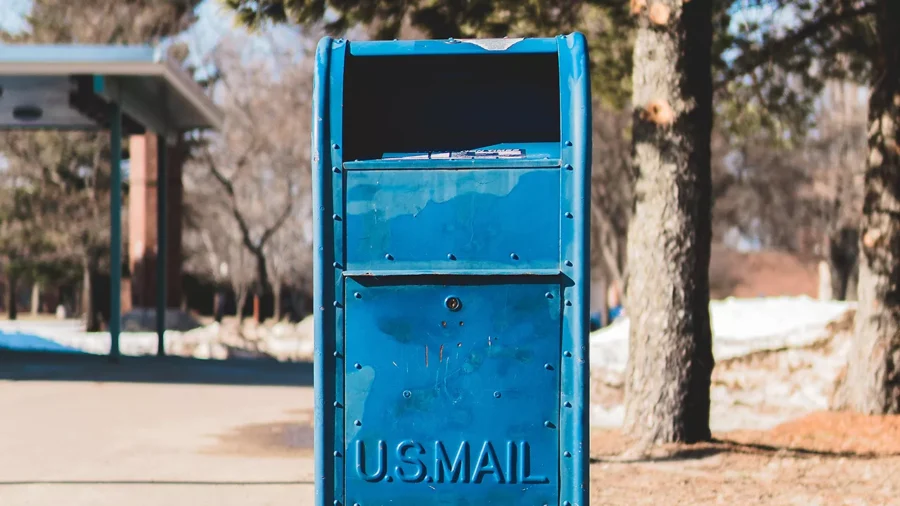
- Source: fastcompany.com
Every piece of mail sent to an inmate in federal prison is opened, searched, and may be read depending on the dictates from the institutions intelligence office. In medium and high security institutions, all mail is delivered to the unit officer unsealed so that it can be read before being delivered to the mail room. Inmate mail is controlled and may be copied if it is determined that there is possible criminal activity being discussed either blatantly or in code. If something is detected it may be rejected and returned to the inmate if it violates policy. Two examples of “rejected correspondence” are an inmate’s attempt to conduct unapproved business, or writing another inmate without permission.
Recent revelations have made it clear that Americans’ mail is being surveilled as well. The New York Times reported on how the United States Postal Service uses a “Mail Isolation Control and Tracking program” to create a permanent record of who is corresponding with each other via snail mail. The program — secretly established in 2001 and not revealed for over a decade — assists the government in implementing blanket surveillance of every single resident of the United States. Each piece of physical mail is photographed and stored in a database. Law enforcement has unfettered access to this data without even the requirement of obtaining a warrant. About 160 billion pieces of mail end up being recorded per year.
7. Telephone Monitoring
For decades the FBOP has possessed the capability to monitor outgoing telephone calls. However, their system required staff to sit and listen to the calls which took staff away from direct supervision of inmates. In the early 2000s, a new system was put in place that allowed any and every phone in an institution to be immediately monitored and the call recorded.
Just like in a federal prison, the NSA has the capability to track and monitor anyone’s phone conversations without recourse. The agency can monitor text messages. They can collect locations, times, and a log of every phone number that has been dialed by any phone in the United States. The government can set up fake base stations to intercept phone calls. They can hack the applications on a person’s smart phone and spy on their usage. The NSA can even crack cellphone encryption.
Unlike the inmates who have no choice in the matter of telephone monitoring, the American people have been told about the spying but have decided not to do anything about it.
8. Lockdowns
When a correctional institution has its daily operations disturbed, often times it results in a lockdown. Lockdowns usually occur after a disturbance, weather concerns, inmate escapes, rumors of a disturbance about to occur, rumored escape attempts, and institution wide searches are some reasons to lockdown.
The most notable “free world” lockdown in recent memory occurred in Boston, Massachusetts. This lockdown mirrors a federal prison lockdown that is called when the entire institution is to be searched. That is exactly what occurred in Boston. In April 2013 the Boston suburb of Watertown was locked down to the point where no one could enter or leave the town, while 9,000 law enforcement personnel and military took part in searching just about every backpack, vehicle, and home that they could get away with.
Some of the searches were voluntary, but many were not. As SWAT teams performed systematic house-to-house searches, videos were captured of families being ripped from their home without a warrant so the police could help themselves to the inside of their homes. What resulted had the look of prisoners being removed from their cells by a SORT unit. Watch for yourself:
- Police perform house-to-house raids in Watertown MA
- Systematic House-to-House Raids in Locked-Down Watertown, Mass.
The Watertown lockdown was practice for future declarations of martial law. Those tactics had been used and perfected in our prison systems for years. Now the “free world” is getting the prison treatment with little objection from the public. The lockdown was not necessary and served mostly to measure the public’s reaction and to establish a sense of fear and intimidation. I think it worked.
9. Snitching
The last thing I want to mention is what I call the “Moscow Law.” While growing up during the cold war, I was taught that in the USSR, people were expected to watch their neighbors, strangers, and even family and friends, and report any suspicious activity to the local police. We in America have that law. Read it below. Did you know it exists?
Title 18 U.S.C. § 4: Misprision of felony: Whoever, having knowledge of the actual commission of a felony cognizable by a court of the United States, conceals and does not as soon as possible make known the same to some judge or other person in civil or military authority under the United States, shall be fined under this title or imprisoned not more than three years, or both.
In prison, there are “snitches” everywhere. Believe me, they are not just the inmates, they are also staff. Programs like Infragard are attempting to do the same thing in the “free world” as it is in the imprisoned world. Once these programs get started, they are almost impossible to stop. What are we paying our law enforcement to do? Protect us or detect us? You decide.
Policy and program statements from the Bureau of Prisons are available at: http://www.bop.gov/

